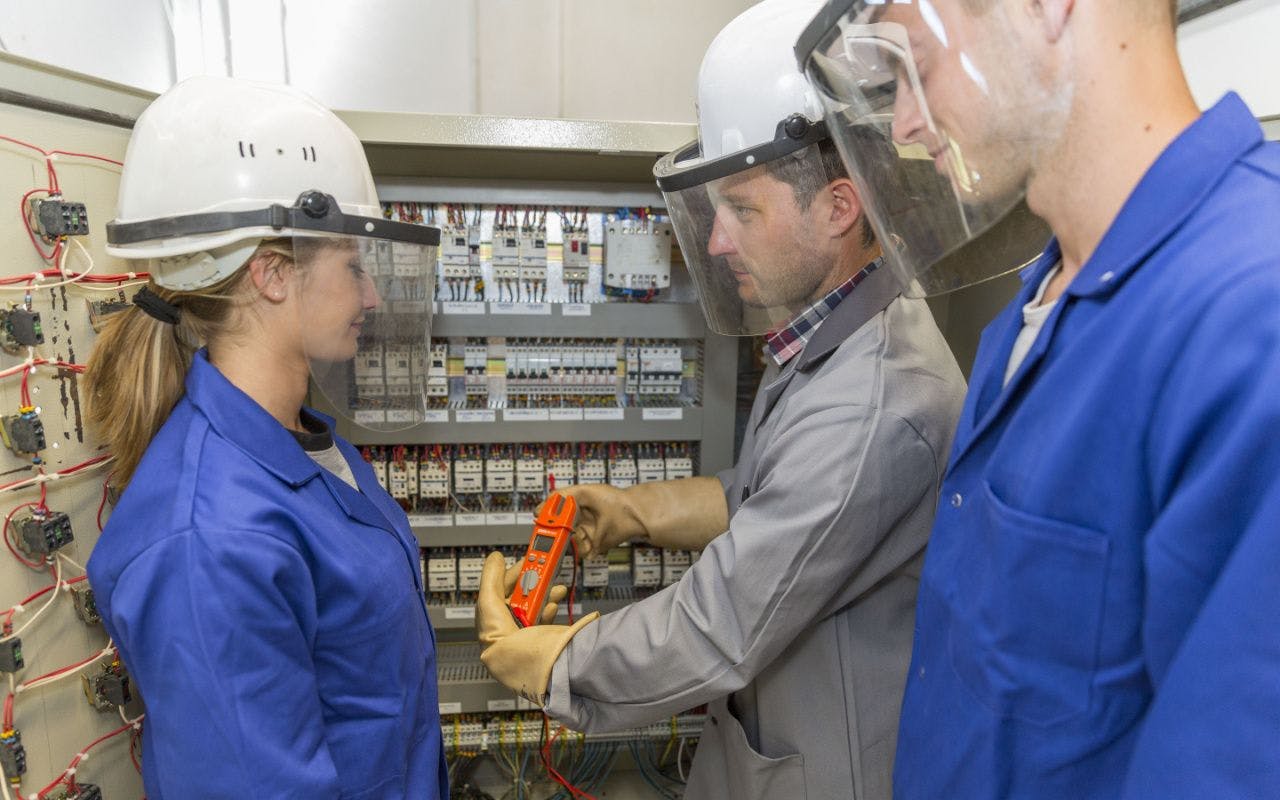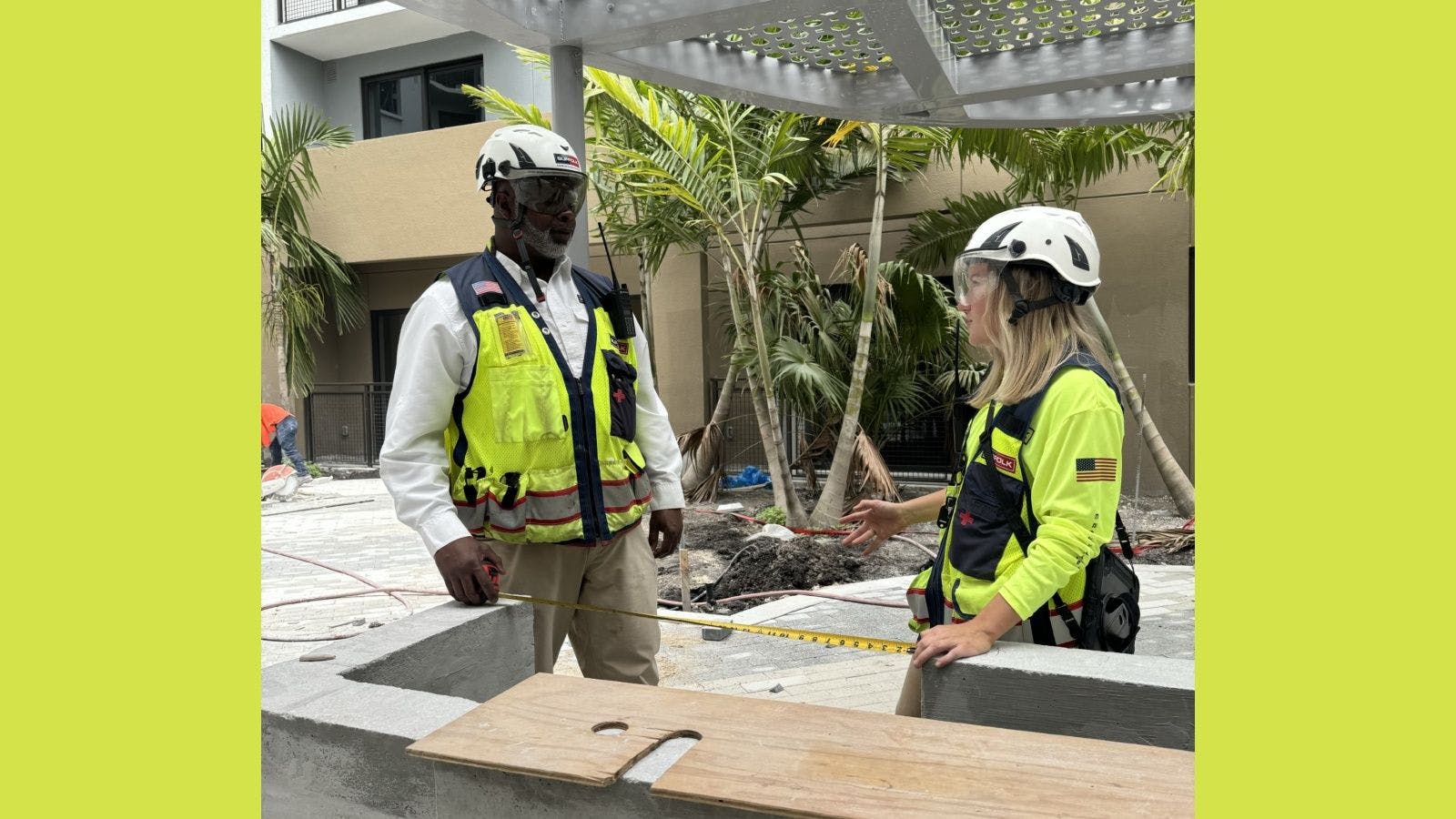
Electric Slide: Upskilling Labor at Lightning Speed
It sounds like an obvious con: “Y’know how your typical electrician apprenticeship takes four years? What if I told ya you could knock out the first one or two years in just two months?”
But that’s exactly what the new Memphis Electrician Apprenticeship Bootcamp delivers: a paid, eight-week crash course designed to fast-track people into the electrical trade. The program is a sort of private–trade–public partnership—developed by UpSmith, a Dallas-based technology startup that matches skilled-labor candidates with potential employers, in conjunction with Associated Builders and Contractors (ABC) of West Tennessee and the city of Memphis, Tennessee.
“The rapid deployment is really what makes this different,” says Brian Haines, vice president with Pyramid Electric and a member of the ABC of West Tennessee executive committee. “Whether we send them through a training program or not, we’ve got to mentor that person and train them, because they can’t just come onto a jobsite and start screwing on boxes, running conduit and pulling wire. That takes time for them to learn, but the burden on our folks is less when they’re exposed to these concepts formally.”
A Math Problem
For Andy Davis, also a member of ABC of West Tennessee’s executive committee, the skilled-labor shortage is a problem with deep roots. His father was a high-school shop teacher until the 1990s, when school districts began cutting back on vocational instruction or eliminating it altogether.
“I think we’re paying for it now,” says Davis, vice president and Memphis general manager for Turner Construction Company. “Now we have a large population that has so many options for where they can choose a career, and we’re seeing a lot of folks take maybe the most immediate path—maybe not one that’s a trade or a skill they’re going to be able to retain and always be able to use.”
The results aren’t unexpected. “Our construction workers are aging out, they’re retiring, and we don’t have the pipeline to fill those jobs—and the consequences are exactly what we’re seeing now,” Haines says. “There have been so many projects in the last six to eight years that get pushed off, pushed forward or rebid because they can’t make the budget, and that’s not just because of materials; it’s because, with a labor shortage, costs go up.”
On top of that, Haines identifies a labor-market flashpoint in the form of BlueOval City, a $5.6-billion battery and electric-vehicle manufacturing facility that Ford Motor Company is building in Stanton, Tennessee, a half-hour northeast of Memphis. Ford’s 4,100-acre “mega site” will require an estimated 24,000 to 30,000 construction workers over the next three to five years. “We only have 30,000 [workers] in all areas of construction within Shelby County, which is our local county here in the Memphis metropolitan area,” Haines says. “So, that’s a math problem.”
A math problem that the whole industry has been trying to solve for a while now.
Eight Weeks Later
Traditionally, efforts to solve the problem have focused on close-to-the-ground sources, such as four-year apprenticeship programs and early outreach to high-school students. Increasingly, however, there’s a need for more adaptive, innovative solutions targeting people who have followed a different path—whether they’ve served in the military, tried out college for a year or two or drifted through the workforce without finding something that speaks to them.
Many of those candidates aren’t inclined to commit to a full-length apprenticeship. And they don’t need to, thanks to accelerated-learning and upskill programs, such as the Memphis Electrician Apprenticeship Bootcamp. Having developed successful HVAC and electrician bootcamps in Dallas, UpSmith Founder and Chief Executive Officer Wyatt Smith turned to Memphis, Haines says, “because of an alignment of the merit-shop philosophy and a strong representation of the trades” in and around West Tennessee.
Smith connected with Davis and ABC of West Tennessee, they roped in the city, which provided classroom and instruction space, and the bootcamp was ready to go. UpSmith handled recruiting, with its platform powering a comprehensive application process in which each candidate uploads a video resume, answers questions related to technical skill as well as personality traits and submits to a background check and drug testing.
From the hundreds of viable candidates that UpSmith identified, 18 students were selected for the first cohort, which began in June. Each student is sponsored by an organization that foots the $15,000 tuition and provides a $300 weekly stipend. Of that first class of 18, UpSmith sponsored three students, while Haines’ company, Pyramid Electric, sponsored 12 and Oteka Technologies, a local structured cabling company, sponsored three.
When they call the program a bootcamp, they mean bootcamp—eight hours per day, every work day, for eight weeks, as opposed to a traditional apprenticeship’s four hours once per week. The actual training was conducted by ForgeNow, a Dallas-based company that provides trades instruction for “adults in all stages of life.”
“We had a couple of individuals that graduated directly from high school,” Davis says. “We had individuals that had been doing other jobs for 15 to 20 years. We had a wide range of individuals that had some experience in college, which didn’t work for them.”
After the eight weeks, students took the test for first-year apprentices. Davis estimates that the success rate was close to 90%; those who passed went to work for the companies that sponsored them, continuing their training while getting onsite experience. It was successful enough that a second electrician bootcamp got underway in September, with plans for an HVAC bootcamp after that. In addition to the “more agile” timeline that UpSmith brought to the process of developing the program, Davis notes the appeal of a contractor not having to “go through their HR process to mine candidates. It takes chasing and finding somebody out of the employer’s hands and turns it over to an organization that can do it.”
The proof of concept for Haines came during regular visits to the first bootcamp, watching candidates grow from one week to the next. “We saw progress,” he says. “We saw lights turning on in their heads. They were developing a track record that we could observe and appreciate, and we could hold that high bar up—to let them know what we expected of them for our investment in them. It’s been good to watch that process.”
Chris leads Construction Executive’s day-to-day operations—overseeing all print and digital content, design and production efforts, and working with the editorial team to tell the many stories of America’s builders and contractors. An experienced association magazine editor, writer and publications strategist, he is a graduate of Saint Joseph’s University and lives in Arlington, Virginia.
Related stories








